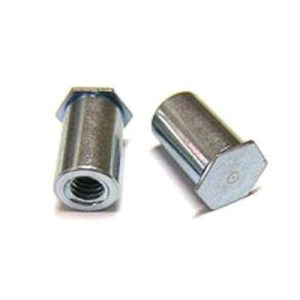Introduction
The aerospace industry constantly seeks innovations to enhance aircraft performance, safety, and longevity. A significant yet often understated contributor to these advancements is the use of NAS1329 inserts in aircraft manufacturing. These specialized components play a crucial role in securing critical parts of an aircraft, ensuring durability and reliability throughout the vehicle's life span.
Importance of NAS1329 Inserts in Aircraft Manufacturing
A. Enhancing Aircraft Durability and Safety
The primary function of NAS1329 inserts is to provide robust, threaded connections in materials that otherwise could not efficiently support screw threads. This capability is vital for aerospace applications where the integrity of every component can significantly impact overall aircraft safety and durability.
- Material Compatibility and Strength
NAS1329 inserts are compatible with a wide range of aerospace materials, including aluminum alloys, composite materials, and titanium. This versatility allows engineers to optimize aircraft designs without compromising the structural integrity of components. For instance, when used in aluminum alloys, these inserts can prevent thread stripping, which is crucial for maintaining the mechanical properties of the aircraft frame.
- Vibration Resistance
Another critical aspect is the vibration resistance offered by NAS1329 inserts. Aerospace vehicles undergo extreme conditions during takeoff, cruising, and landing, where vibration levels can lead to the loosening of fasteners. The unique design of these inserts includes features that lock the insert in place, significantly reducing the risk of vibration-induced loosening.

B. Improving Maintenance and Repair Efficiency
The design of NAS1329 inserts also contributes significantly to the ease of maintenance and repair of aerospace vehicles. Their standardization across the aerospace industry means that maintenance crews can quickly and efficiently replace or repair components, reducing aircraft downtime and ensuring quick turnaround times.
- Cost-Effectiveness
Incorporating NAS1329 inserts into aircraft designs can lead to substantial cost savings over the vehicle's lifespan. For instance, the ability to easily repair threaded connections without replacing entire components can significantly reduce maintenance costs. Considering the price of aerospace-grade materials and parts, these savings are non-negligible.
- Life Span and Reliability
The life span of an aircraft component fitted with NAS1329 inserts can exceed that of components using traditional fastening methods. These inserts are designed to withstand the harsh conditions of aerospace environments, including extreme temperatures, pressure variations, and chemical exposures. This durability translates into a longer life span for the aircraft's critical components, enhancing the overall reliability of the aerospace vehicle.
Conclusion
NAS1329 inserts may be small components, but their impact on aerospace engineering is substantial. From enhancing the durability and safety of aircraft to improving maintenance efficiency and reducing operational costs, these inserts play a pivotal role in the aerospace industry. As technology advances, the importance of such components in securing the future of aerospace engineering will only grow, underscoring the need for continued innovation and optimization in aircraft manufacturing processes.